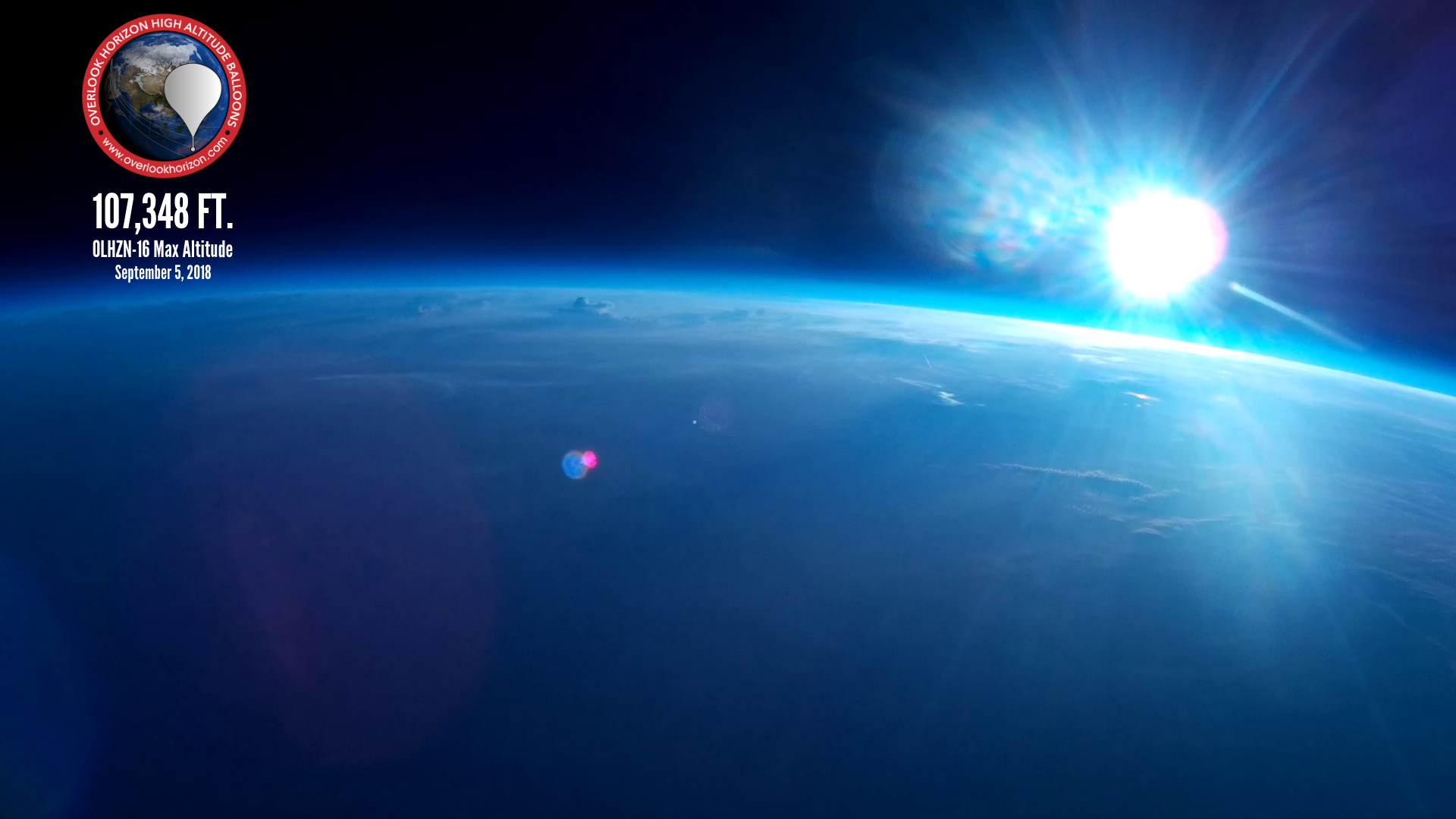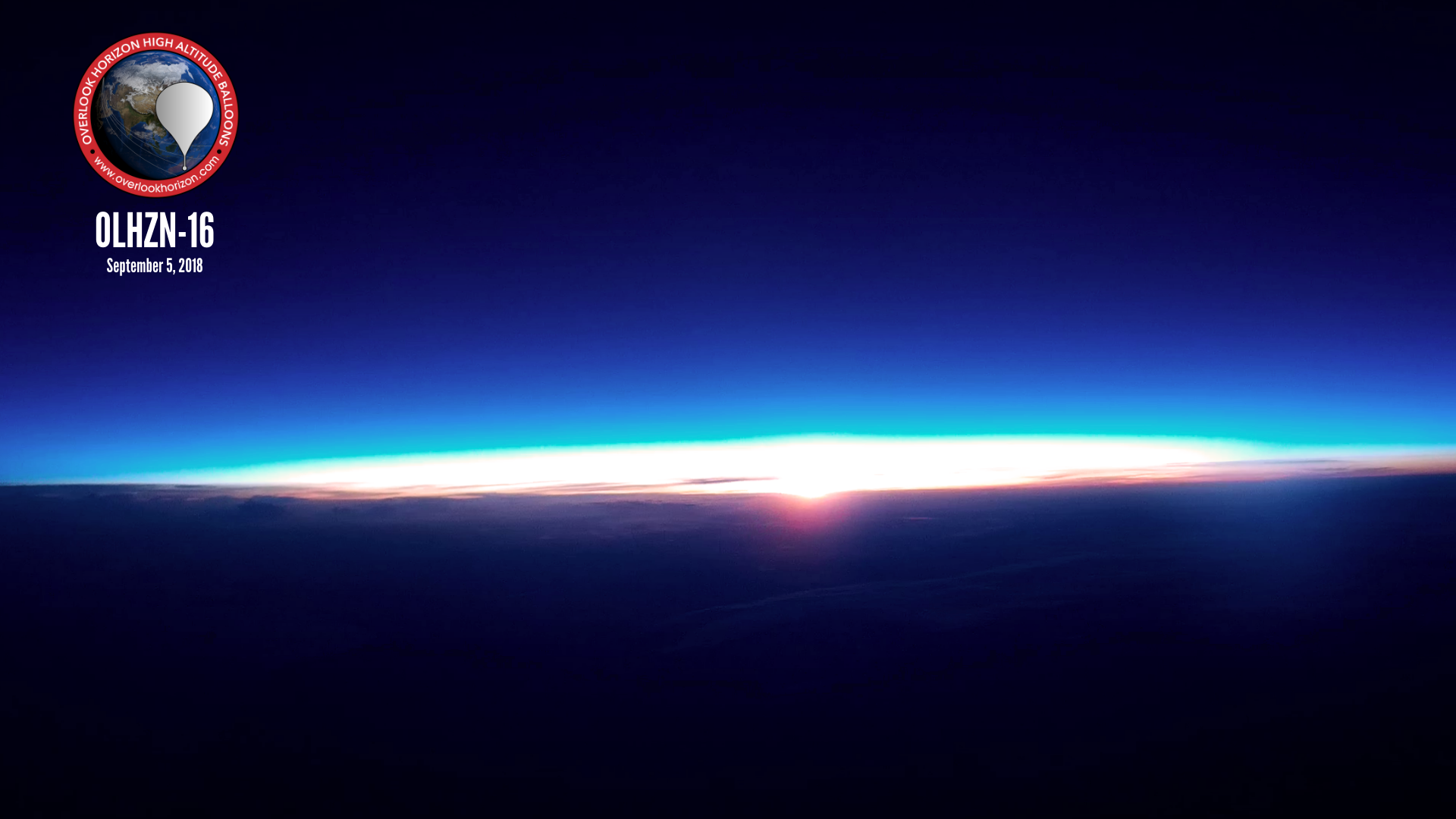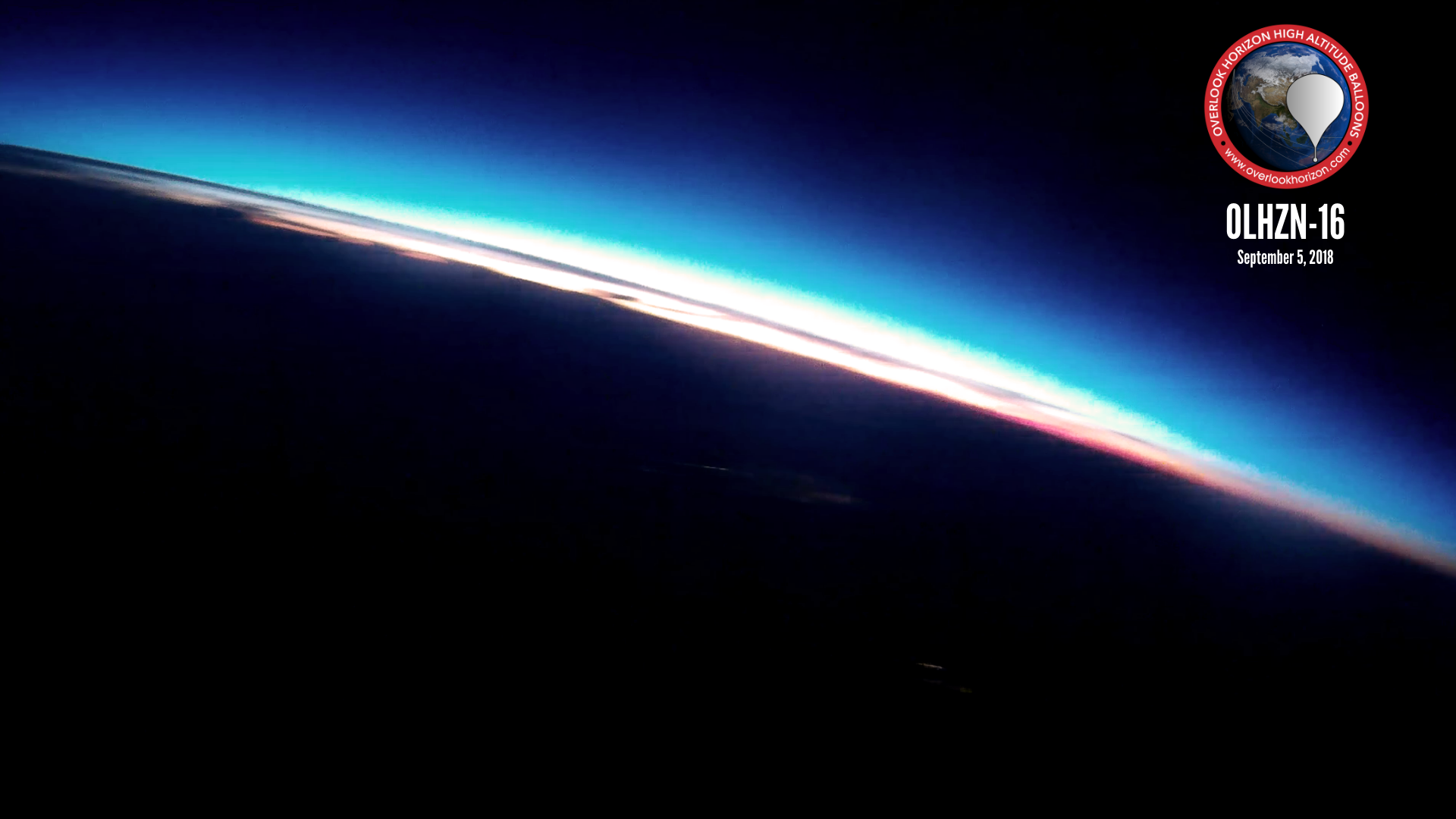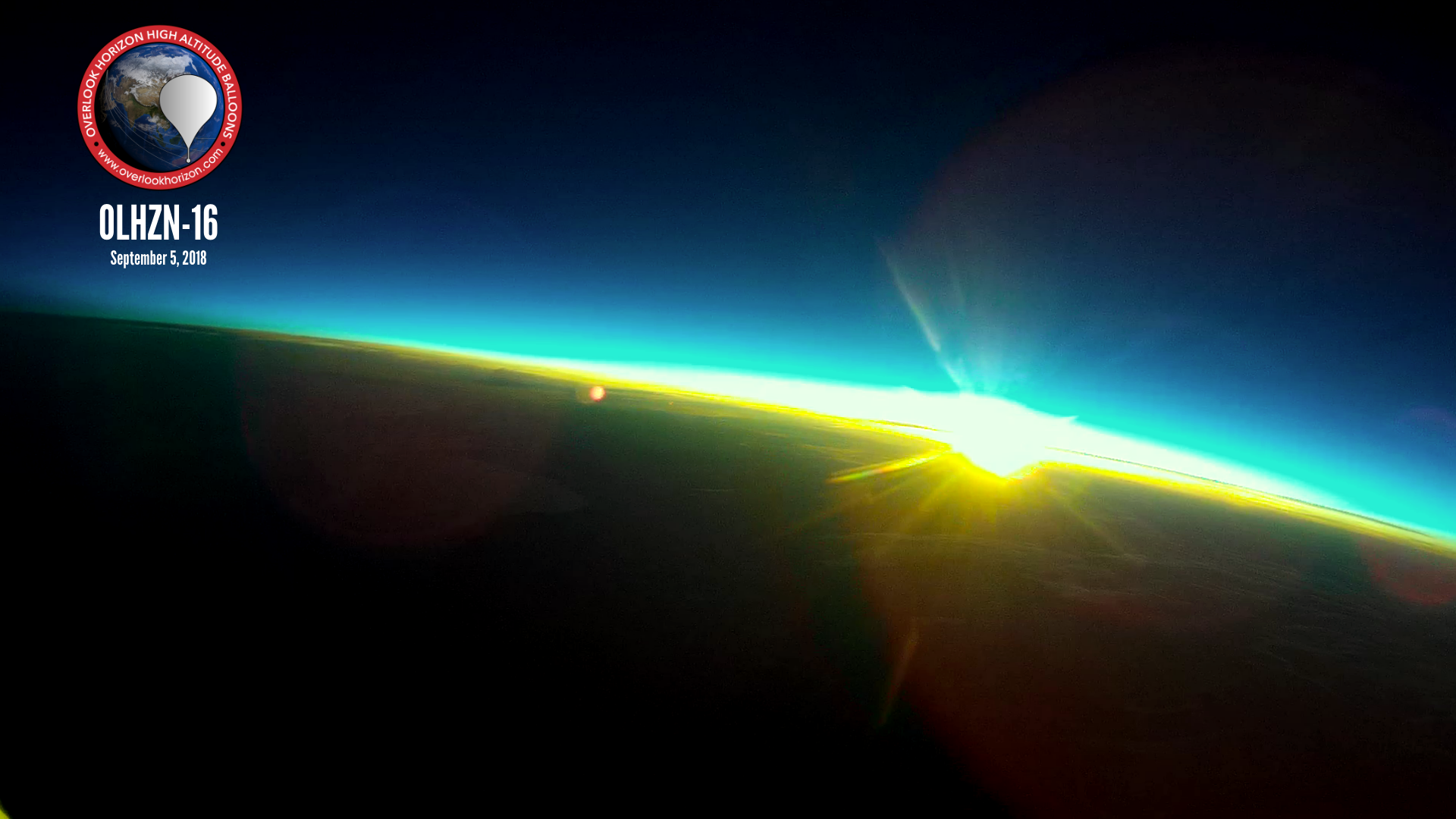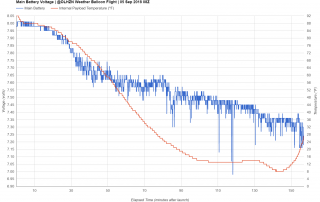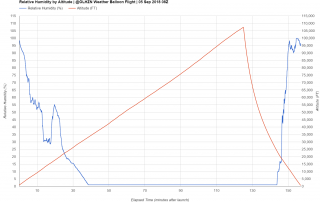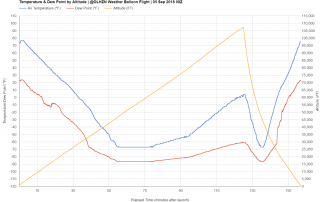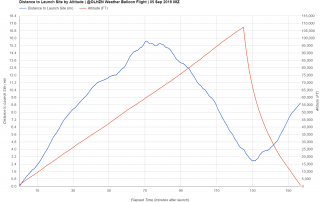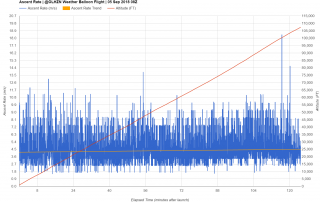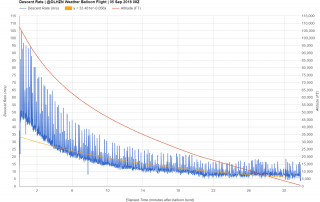OLHZN-16 was the sixteenth high altitude weather balloon flight for Overlook Horizon High Altitude Balloons. This flight launched on September 5, 2018 at 4:48am EDT (08:48 UTC) during the early morning sunrise hours over the Rochester, NY area. This flight again used three Lightdow LD4000 Cameras to capture the early morning footage, including one upwards facing camera recording the balloon footage.
Flight Day Story
OLHZN-16 was a great final flight for our 2018 flight season with another complete success from launch to landing! This flight launched very early in the morning at exactly 4:48am EDT and preparations started around midnight prior to the launch. The main focus of this launch was to capture imagery of the sunrise from high altitudes which was the primary driving force behind the early morning launch time.
After all the equipment was setup, ready and waiting for launch preparations we were able to take a few moments to speak with Ryan Wrecker from KMOX News during his Overnight America radio show and talk about the flight!
Flight preparations proceeded normally with this flight and we were able to launch mostly on time. During the launch, the ground levels winds were a bit gusty and we had to launch a few seconds late in order to reposition the payload to clear some nearby trees / bushes, which we just barely cleared.
Since this flight started during complete darkness, we utilized some high visibility strobes lights for aircraft safety. The lights were extremely bright and were positioned to shine horizontally from the top of the payload to maximize visibility to any aircraft in the area. Since they were positioned to face out horizontally, we didn’t have really high hopes that we’d be able to see the the strobe lights for very long from the ground, however, we were extremely surprised to retain visibility of the strobe lights for a very long time from the ground even as the payload ascended over 25,000 FT. we still retained visibility!
The flight proceeded mostly as expected and reached a terrific altitude of 107,348 FT. The tracking systems all operated normally during flight. One minor issue experienced was with the ground-based landing prediction system that was frozen and did not start right away. This is somewhat important as the landing prediction system uses the data from the ascent to predict the landing spot. We didn’t identify that this wasn’t working until after the payload passed above 37,000 FT. so we had no historical data to use for landing prediction below this altitude. Surprisingly, even without this data, the landing prediction system was able to follow allow very closely and we were able to witness the landing of the payload and almost CATCH IT like we did during OLHZN-8! The payload eventually landed just under 200 ft. into a cornfield so we weren’t able to actually get underneath it to catch it, but we did get some cool photos and a video of the payload landing.
The footage and imagery from the flight turned out great. At first we were a bit disappointed by the imagery obtained. Our flight cameras are pretty inexpensive and their low light capabilities are pretty limited. It’s likely very possible to get better quality footage with a nicer camera like a regular GoPro, but the more we reviewed our footage and images, the happier we were with them. Some day, we may try this type of flight again with better cameras, but for now we’re very satisfied. This was a great final flight for 2018 that operated successfully, reached a fantastic altitude and had an easy recovery! It doesn’t get much better than that!
Important Info
Live Broadcast
Flight Data
Below is our collected data for this flight. You can also view the raw sounding data from this flight here.
Flight Prediction vs. Actual Flight Path
The map below shows our predicted (purple) flight path vs. our actual (orange) flight path.

